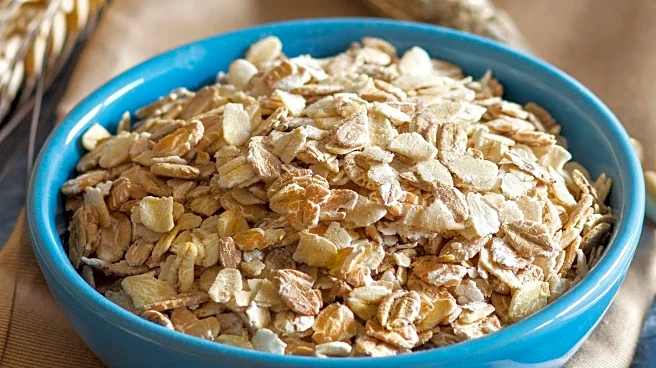What's Happening?
Consumer Reports has released guidance on selecting healthier breakfast cereals, following a study that highlights increasing sugar, fat, and sodium levels in cereals marketed to children. The study, which examined cereals launched between 2010 and 2023, found that these products have become sweeter and less nutritious over time, with a single serving often containing nearly three teaspoons of sugar. This amount represents about 45% of the daily added sugar limit recommended by the American Heart Association for children. Consumer Reports suggests that consumers should carefully examine ingredient lists and nutrition facts, prioritizing cereals with whole grains as the first ingredient and less than six grams of added sugar per serving. They also recommend mixing high-sugar cereals with lower-sugar, higher-fiber options to improve nutritional balance.
Why It's Important?
The findings from Consumer Reports underscore a growing concern about the nutritional quality of foods marketed to children, which can have significant implications for public health. High sugar intake is linked to various health issues, including obesity and diabetes, particularly in children. By providing guidance on healthier cereal choices, Consumer Reports aims to empower consumers to make informed decisions that can contribute to better health outcomes. This advice is particularly relevant for parents seeking to provide nutritious options for their families, potentially influencing purchasing habits and encouraging food manufacturers to reformulate products to meet consumer demand for healthier options.
What's Next?
As awareness of the nutritional content of breakfast cereals increases, it is likely that consumers will demand healthier options, potentially prompting manufacturers to reformulate their products. This could lead to a shift in the cereal market, with more emphasis on whole grains and reduced sugar content. Additionally, public health campaigns may intensify efforts to educate consumers about reading nutrition labels and making healthier food choices. Retailers might also respond by offering a wider selection of nutritious cereals, further influencing consumer behavior and industry standards.











